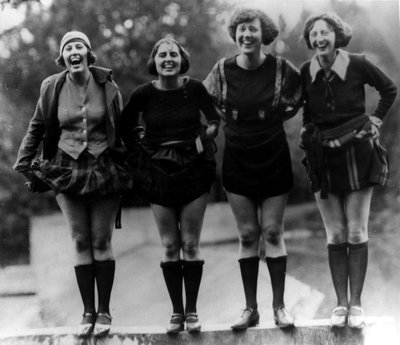Women have always played a vital role at Oregon State University. As you explore this exhibit we invite you to celebrate, consider, and be curious about women’s work, words, communities, professional barriers, heartbreaks, contradictions, achievements, and perseverance.
These are the stories of many remarkable women: students, staff, teaching faculty, researchers, and administrators. We have situated them in their “places in spaces” and encourage you to think broadly about all the ways our campus has provided opportunities for women to learn and grow, but also how the structure of higher education created patriarchal structures women had to overcome.
We couldn’t include them all, nor did we uncover them all, but we hope that when you leave today you do so with a deeper understanding of the complex and inspiring history of women at OSU.
The contemporary student of women’s history can learn much by reviewing a collection of official publications issued by this institution. The first catalog for the state’s new Land Grant school, was published in 1866 and noted that "[y]oung ladies will be admitted into all the College Classes, and will be entitled to the same honors and diplomas as are conferred upon young gentleman. In addition to the thorough mental discipline that this arrangement will give them, competent instructors will be secured for the departments of Music, Painting, Drawing, etc."
The next year, with two women in the Collegiate Department, the catalog addressed women’s lodging by saying that "[y]oung ladies will be required to board at the Young Ladies Boarding House, unless they have near relatives who can receive them, and who are willing to assume the entire responsibility of their government. Board four dollars per week. Young men, by renting rooms, can board themselves at half this amount."
The first student handbook was produced in 1901. Gender-specific regulations were not explicitly stated, but students were reminded to be “careful in the selection of your friends” because “people judge you by your actions during the first few weeks.”
In 1924, the first Associated Women Students Handbook was produced. Aspirationally, OAC women were described as “thoughtful of her obligations to establish and maintain a high social and moral standard; she is loyal to herself, to the other girls, and to her college; she conducts herself in such a manner that her character is above reproach.”
The tone lightened by the early 1930s, but these booklets still served as a manual for “making things easier” for freshmen and matriculating women.
Female students matriculating in 1937 received the first Coed Code, which helped “incoming freshman woman see [their] way a little more clearly, weigh [their] opportunities a little more wisely, and prepare [themselves] a little more fully for the active, varied, and stimulating life of a co-ed.” The last Coed Code was produced in 1964.
The world of the 1960s was different from the 1860s, but gendered “hints” and explicit regulations functioned in the same way: they suggested strategies for structuring female behavior in order to fit in and succeed.

